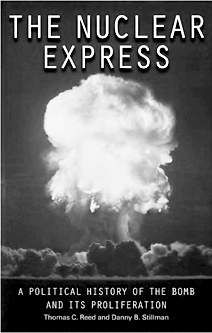Did a spy at Los Alamos give Soviets the H-bomb?
Published 4:00 am Friday, January 2, 2009

- Did a spy at Los Alamos give Soviets the H-bomb?
A defining moment of the Cold War came in 1955, when Moscow detonated its first hydrogen bomb — a weapon roughly a thousand times more powerful than atom bombs and ideal for obliterating large cities.
The bomb ended the American monopoly and posed a deadly danger. So Washington dealt far more gingerly with Moscow, beginning a tense era dominated by fear of mutual annihilation.
A new book says Moscow acquired the secret of the hydrogen bomb not from its own scientists but from an atomic spy at the Los Alamos weapons lab in New Mexico. Historians call its case sketchy but worthy of investigation, saying the book, “The Nuclear Express: A Political History of the Bomb and its Proliferation,” by Thomas Reed and Danny Stillman, adds to a growing number of riddles about who invented the Soviet H-bomb a half-century ago.
“It’s quite intriguing,” Robert Norris, a nuclear historian, said of the book. “We’ve learned a lot about atomic spies. Now, we find out that a spy may be at the center of the H-bomb story, too.”
‘A fascinating puzzle’
A surprising clue the authors cite is disagreement among Russian nuclear scientists over who deserves credit for the advance as well as some claims that espionage played a role. The book details this Russian clash and questions the popular idea that Andrei Sakharov, who later became known as a campaigner for human rights, independently devised the Soviet hydrogen bomb.
The book does not name the suspected spy but says he was born in the U.S., grew up in a foreign country, fell in with communist sympathizers during the Depression and worked at Los Alamos during World War II. Afterward, it says, he became “deeply involved” in the American effort to develop the H-bomb.
The book says that Stillman, a physicist who worked at Los Alamos from 1965 to 2000 and served for more than a decade as the lab’s director of intelligence, took his suspicions in the 1990s to the FBI. But the FBI inquiry, the book says, was “botched beyond recognition” and went nowhere. The alleged spy, the book adds, is dead.
Historians and nuclear scientists call the book’s claim provocative if vague and seemingly circumstantial. They add that its suspect is unlikely to be the last put forward to account for the Soviet breakthrough.
“It’s a fascinating puzzle,” said David Holloway, author of “Stalin and the Bomb” and a military historian at Stanford University. “Mystery is too strong a word. But exactly how the Soviet physicists hit on the idea remains unclear.”
Harold Agnew, who worked on the world’s first H-bomb and eventually became director of Los Alamos, said the Soviets probably had had numerous spies divulging the secret. “We were always surprised,” he said, “at how quickly they moved ahead.”
The new book is due this month from Zenith Press. A main focus is how spies spread nuclear secrets around the globe.
In recent years, the ranks of known Soviet spies in the Manhattan Project to build the atom bomb have swollen to a half-dozen or so, and more are expected to be named. But so far, accounts of Los Alamos’ project to build the hydrogen bomb have documented no major episodes of spying.
Building the bomb
Hydrogen bombs, unlike their atomic cousins, are unlimited in size. American scientists who sought to devise one in the 1940s and early 1950s thus called their dream weapon “the Super.”
The successful architects were Edward Teller and Stanislaw Ulam. Their 1951 breakthrough, known as “radiation implosion,” called for putting an atom bomb at one end of a metal casing and hydrogen fuel at the other. The flash of the exploding atom bomb was to flood the case’s interior with enough radiation to compress and ignite the hydrogen fuel, releasing huge bursts of energy through nuclear fusion.
In late 1952, the first test of their idea caused the Pacific island of Elugelab to vanish. The explosion was 700 times more powerful than the blast that leveled Hiroshima. Moscow had nothing comparable until 1955. It then made an arsenal of H-bombs that in time dwarfed Washington’s. It also detonated the world’s largest bomb — a behemoth more than 3,000 times as powerful as the Hiroshima blast.
Over the decades, scholars identified Klaus Fuchs as one possible source of H-bomb intelligence. The Soviet spy in the Manhattan Project left Los Alamos in 1946, gave Moscow H-bomb ideas and was arrested in 1950. But most scholars judge his tips as too early, too sketchy and too erroneous to have provided much assistance.
The authors of “The Nuclear Express” said in interviews that their interest in the issue stirred after the Cold War as former Soviet nuclear scientists told of their hidden labors. Reed, a former designer of H-bombs at the Livermore weapons laboratory in California and a former secretary of the Air Force — met a number of the Russians scientists at Livermore in March 1997.
He said the meetings had proved eye opening. The Russian scientists described how Sakharov never took full credit for the hydrogen advance. And Lev Feoktistov, a member of the founding H-bomb team, suggested that espionage unrelated to Fuchs played a role.






